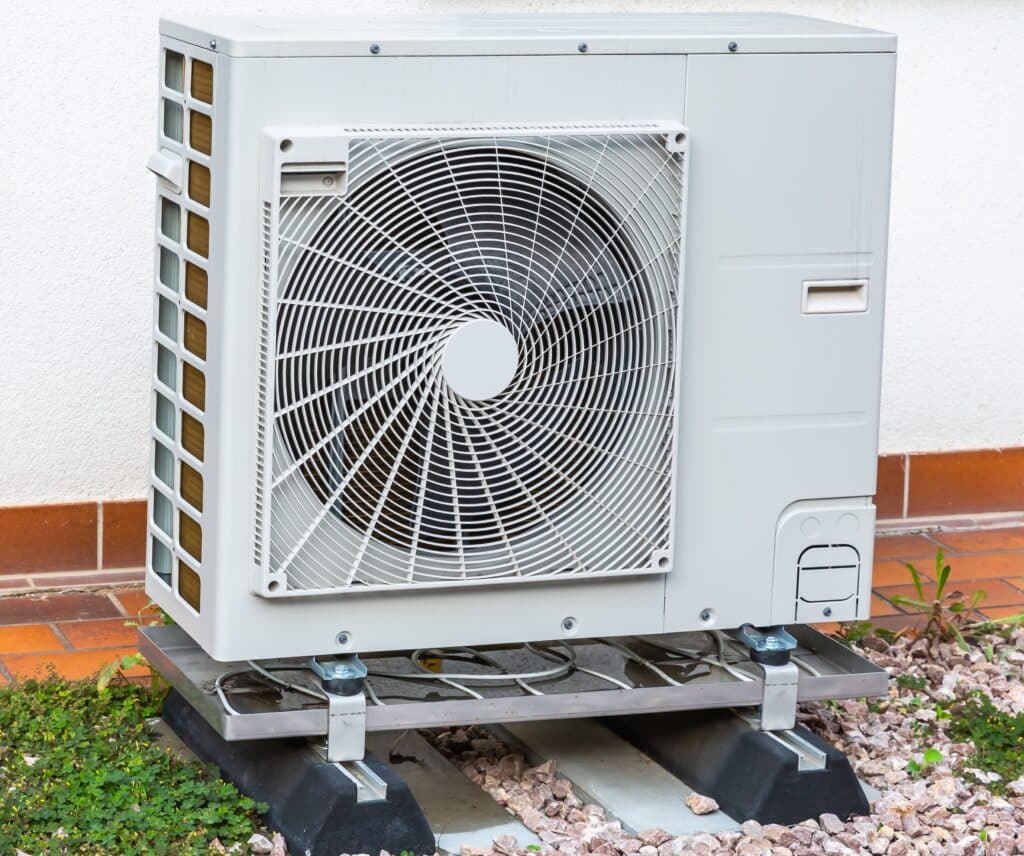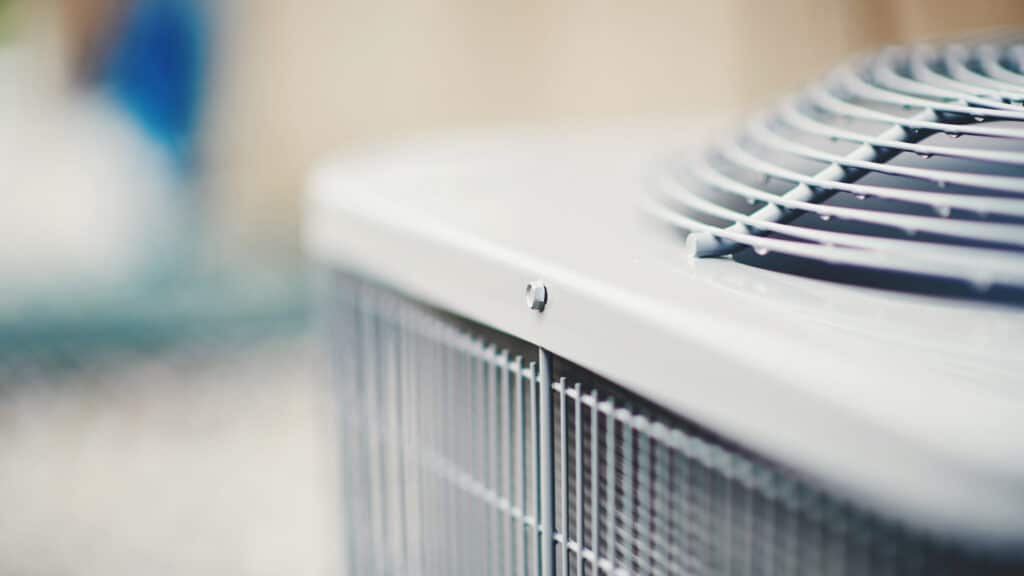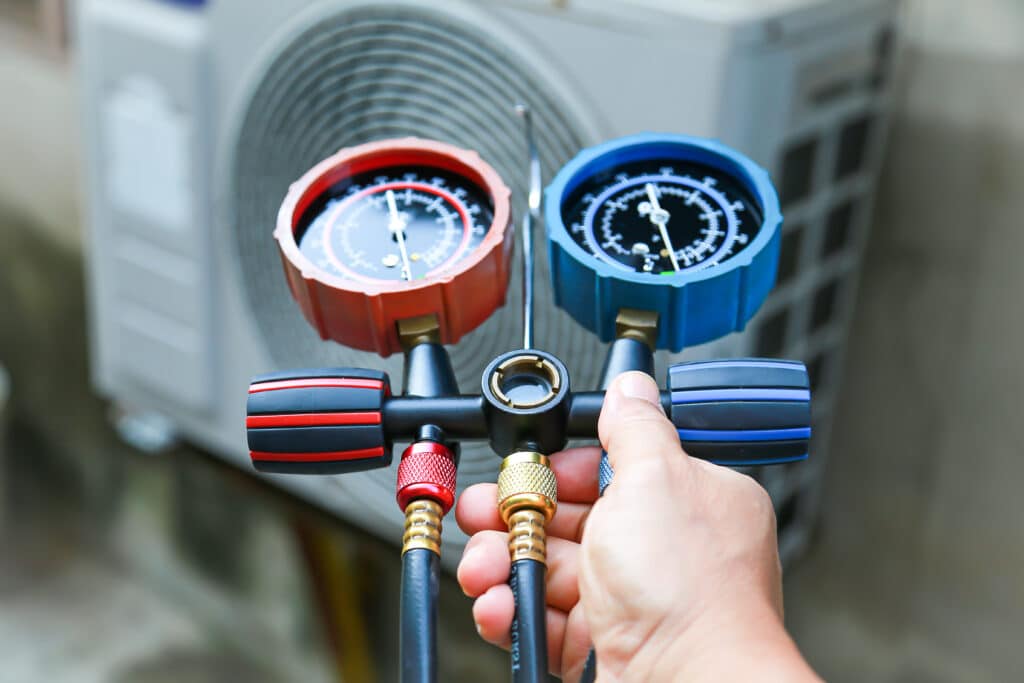
AC Drain Pan Installation: A Homeowner’s Guide
Have you ever wondered how crucial the role of an AC drain pan is in maintaining the health of your HVAC system and preventing potential water damage to your home?
If you’re a homeowner, understanding the intricacies of AC drain pan installation can save you from a multitude of problems down the line.
In this article, we’ll delve deep into the world of AC drain pan installation, exploring its significance, the process involved, and the myriad benefits it offers.
Whether you’re looking to install a new drain pan or replace an old one, this comprehensive guide will equip you with the knowledge you need to ensure your air conditioning system operates efficiently and effectively.
A Detailed Explanation of AC Drain Pan Installation
The AC drain pan, a critical component of your HVAC system, plays a pivotal role in collecting condensation from your air conditioner’s evaporator coils.
Without a properly functioning drain pan, this water can cause significant damage to your system and home. Here’s everything you need to know about installing and maintaining this essential piece.

What is AC Drain Pan Installation?
AC drain pan installation is a critical process that involves setting up a pan or tray under your air conditioning unit’s evaporator coils to catch condensation and prevent water leakage. This simple yet crucial component plays a pivotal role in maintaining the efficiency and longevity of your HVAC system. Without a properly installed drain pan, the water that condenses on your AC’s evaporator coils during the cooling process could lead to water damage, mold growth, and a host of other issues.
The installation process requires precision and understanding of your HVAC system. It involves selecting the right size and type of pan – often made from materials like plastic or metal that are resistant to rust and corrosion.
The pan must be positioned correctly to ensure that it catches all condensate from the coils. Moreover, it’s connected to a drain line, which safely channels the collected water away from your HVAC system and home, preventing any potential water damage.
Regular maintenance is also a part of the AC drain pan installation process. Homeowners should routinely check the pan for any signs of damage, such as cracks, rust, or leaks.
Over time, even a well-installed drain pan may require replacement due to wear and tear, which is crucial for maintaining the effectiveness of your air conditioner drip tray and preventing AC unit water leakage.
Understanding the nuances of AC drain pan installation can significantly impact the efficiency of your central air conditioning maintenance routine. It’s not just about preventing leaks; a well-maintained drain pan also contributes to indoor air quality improvement and ensures that your cooling system repair costs are kept to a minimum over the long term.
Whether you’re considering a condensate pan replacement or setting up a new emergency drain pan setup, knowing the ins and outs of this process is essential for any homeowner looking to maintain an optimal HVAC system.
Understanding the Importance of the Drain Pan
Essential Role in HVAC Health
The AC drain pan is more than just a receptacle for water; it’s a crucial component that ensures the longevity and efficiency of your HVAC system.
Positioned directly beneath the evaporator coils, the drain pan collects condensation that forms during the cooling process. This simple yet vital function prevents water from accumulating within the system, which can lead to a host of issues, including water damage to your home, mold growth, and compromised system performance.
Preventing Water Damage and Mold Growth
Water leakage is a common issue in HVAC systems without proper AC drain pan installation. When condensation is not adequately collected and diverted, it can seep into your home’s structure, leading to costly water damage and the potential for mold and mildew growth.
Mold not only poses a risk to your home’s integrity but can also significantly impact indoor air quality, posing health risks to the occupants.
By ensuring a robust AC drain pan installation, you’re not just protecting your HVAC system but also safeguarding your home’s environment and the health of its inhabitants.
Enhancing System Efficiency
A well-maintained drain pan contributes significantly to the overall efficiency of your HVAC system.
When water is allowed to pool in or around the system due to inadequate drainage, it can lead to increased humidity levels and force the system to work harder, thereby reducing its efficiency and lifespan.
Regular maintenance, including drain line flushing and checking for any signs of AC condensate drainage issues, is essential in maintaining this efficiency.

Importance in HVAC Maintenance and Upkeep
The drain pan plays a pivotal role in residential air conditioner upkeep and central air conditioning maintenance.
It’s a component that should not be overlooked during routine maintenance checks. Technicians often inspect the drain pan for signs of wear, such as cracks or corrosion, which could lead to leaks. They also ensure that the overflow safety switch, a feature in some drain pans, is functioning correctly to prevent water overflow and potential damage.
The AC drain pan is a key player in the overall health and efficiency of your HVAC system. Its role in preventing water damage, and mold growth, and ensuring system efficiency underscores the importance of regular maintenance and the need for professional attention in the case of AC system troubleshooting and cooling system repair.
Whether it’s a routine check or a necessary condensate pan replacement, understanding and addressing the needs of your AC drain pan can lead to significant benefits for your HVAC system and home.
The AC Drain Pan Installation Process
Installing an AC drain pan is a critical step in ensuring the longevity and efficiency of your HVAC system.
This process involves a few key steps that require attention to detail and an understanding of your system’s specific needs.
Choosing the Right Pan
The first step in the AC drain pan installation process is selecting the appropriate pan for your system. The size and material of the pan are crucial factors to consider.
It must be large enough to catch all the condensate without overflowing and made from durable materials that resist rust and corrosion. Metal pans are common, but plastic options are also popular due to their rust resistance. Selecting the right pan is essential for effective condensate pan replacement and rust-resistant drain pan installation.
Positioning the Pan
Once you have the right pan, the next step is positioning it correctly under the evaporator coils. This placement is critical because improper positioning can lead to ineffective water collection, resulting in leaks and potential water damage.
The pan should be level to ensure an even distribution of collected water and to facilitate smooth drainage. Proper positioning is a key aspect of installing AC drip pans and plays a significant role in condensation overflow prevention.
Connection to the Drain Line
The final step in the AC drain pan installation process is connecting the drain pan to the drain line. This connection is vital for the efficient evacuation of water collected in the pan.
Ensuring a secure and leak-proof connection prevents water from backing up and causing damage. This step is crucial in AC condensate drainage and helps maintain indoor air quality by preventing mold and mildew growth associated with stagnant water.
Ensuring Proper AC drain pan installation
Proper AC drain pan installation is not just about placing and connecting; it’s about ensuring that each component works harmoniously to protect your HVAC system and home.
A well-installed drain pan contributes to the overall air conditioning unit servicing and is a critical aspect of central air conditioning maintenance.
It’s advisable to have a professional assess the installation to ensure that the pan is correctly sized, positioned, and connected, as this can significantly impact the system’s efficiency and the prevention of leaks.
The AC drain pan installation is a detailed procedure that requires careful consideration of the pan’s size and material, precise positioning under the evaporator coils, and a secure connection to the drain line.
These steps are essential in ensuring effective AC unit water leakage prevention, contributing to the system’s longevity and the comfort and safety of your home environment.

Regular Maintenance and Inspection
Maintaining and inspecting your AC drain pan is crucial for ensuring the longevity and efficiency of your HVAC system.
Regular maintenance not only prevents leaks and potential water damage but also contributes to the overall health of your air conditioning unit.
Routine Cleaning
One of the fundamental aspects of AC drain pan maintenance is routine cleaning. Over time, dirt, debris, and even microbial growth can accumulate in the pan, potentially clogging the drain line and leading to water overflow.
Regular cleaning, ideally as part of your broader HVAC system maintenance, ensures that the pan remains clear of obstructions and functions effectively. This cleaning process is integral to air conditioning unit servicing and helps in maintaining optimal system performance.
Inspecting for Damage or Corrosion
Another critical aspect of maintenance is inspecting the drain pan for any signs of damage or corrosion.
Even minor cracks or rust can lead to significant water leakage, potentially causing damage to your HVAC system and home. Regular inspections can identify these issues early on, allowing for timely condensate pan replacement or repair, which is essential in preventing AC unit water leakage and maintaining indoor air quality.
Checking for Proper Drainage
Ensuring that the drain pan is properly draining is another key maintenance task. A pan that is not draining correctly can cause water to back up, leading to overflow and the associated risks of water damage and mold growth.
Part of this inspection should include checking the drain line flushing to ensure it is clear of clogs or obstructions, a crucial step in AC condensate drainage.
Professional Inspections
While some aspects of drain pan maintenance can be handled by homeowners, professional inspections are invaluable.
AC drain pan installation technicians can perform comprehensive checks, including assessing the overflow safety switch, a component that can prevent water damage if the drain pan overflows. These AC drain pan installation professionals can also provide insights into more complex issues like AC system troubleshooting and evaporator coil maintenance, ensuring that your system remains in top condition.
The Impact of Regular Maintenance
Regular maintenance and inspection of your AC drain pan have far-reaching benefits. They not only prevent immediate issues like leaks and water damage but also contribute to the long-term health of your HVAC system.
Effective maintenance can enhance cooling system repair efforts, extend the lifespan of your system, and ensure that your home remains comfortable and safe from the risks associated with water damage and poor air quality.
Regular maintenance and inspection of your AC drain pan are essential practices that contribute significantly to the health and efficiency of your HVAC system.
By incorporating these tasks into your regular HVAC system maintenance routine, you can ensure that your system operates effectively, preventing leaks, and water damage, and ensuring a comfortable and healthy home environment.
When to Replace Your Drain Pan
Understanding when to replace your AC drain pan is crucial for maintaining the integrity and efficiency of your HVAC system.
Over time, the drain pan can suffer from wear and tear, which may lead to cracks, rust, or other forms of damage, potentially causing leaks and other related issues.
Identifying Signs of Wear and Damage
The first step in determining whether to replace your drain pan is to identify signs of wear and damage.
Visible cracks, rust, or corrosion in the pan are clear indicators that it’s time for a replacement. These defects can compromise the pan’s ability to hold water, leading to leaks that can cause water damage to your home and affect the efficiency of your HVAC system.
The Consequences of a Damaged Drain Pan
A damaged drain pan can lead to a variety of problems, including water leakage that can damage the floors, walls, and ceilings of your home.
Additionally, the excess moisture can create an ideal environment for mold and mildew growth, which can have adverse effects on indoor air quality and potentially lead to health issues for the occupants.
The Role of the Drain Pan in System Efficiency
The drain pan also plays a vital role in maintaining the efficiency of your HVAC system.
A leaky or inefficient drain pan can cause water to accumulate in and around the HVAC units, which can lead to increased humidity levels and force the system to work harder to maintain the desired temperature, thereby reducing its efficiency and lifespan.
Professional Assessment and Replacement
If you suspect that your drain pan may need to be replaced, it’s advisable to consult with a professional AC drain pan installation technician. They can provide a thorough assessment to determine if a replacement is necessary and ensure that the new pan is correctly installed.
An AC drain pan installation professional can also recommend the best type of pan for your system, considering factors like size, material, and compatibility with your HVAC unit.
Proactive Replacement as Preventative Maintenance
Proactively replacing your AC drain pan before it fails can save you from the inconvenience and costs associated with water damage and system inefficiencies.
Regular inspections and maintenance can help identify when a replacement is becoming necessary, allowing you to address the issue promptly and maintain the optimal performance of your HVAC system.
Knowing when to replace your AC drain pan is essential for preventing leaks, avoiding water damage, and ensuring the efficient operation of your HVAC system.
Regular inspections and understanding the signs of wear and damage can help you determine the right time for a replacement, ensuring the longevity and reliability of your air conditioning unit.
Professional Installation vs. DIY
When it comes to AC drain pan installation, homeowners are often faced with the choice between a do-it-yourself approach and hiring a professional.
While DIY can be tempting, especially for those who are handy or looking to save on costs, understanding the benefits of professional AC drain pan installation can highlight why it’s often the preferred choice for such a critical component of your HVAC system.
Expertise and Precision
Professional AC drain pan installation technicians bring a level of expertise and precision to the installation process that is hard to match in a DIY scenario.
They have the training and experience to ensure that the drain pan is correctly sized, properly positioned, and securely connected to the drain line. This expertise is crucial in preventing issues like leaks, water damage, and inefficiencies in your HVAC system.
Time and Efficiency
Installing an AC drain pan might seem straightforward, but it can be time-consuming, especially for those who are less experienced.
AC drain pan installation professionals can complete the job more quickly and efficiently, ensuring that your HVAC system is not out of service for longer than necessary. This efficiency is particularly important in times of extreme weather when you can’t afford to be without your air conditioning.
Tools and Equipment
Professional AC drain pan installation has access to the right tools and equipment to ensure the drain pan is installed correctly. This includes items that the average homeowner might not have, such as specialized HVAC tools and materials.
Using the correct tools can make a significant difference in the quality and durability of the installation.
Warranty and Accountability
Many professional AC drain pan installation services come with a warranty or guarantee on the work performed.
This means that if something goes wrong with the AC drain pan installation, you can often have it corrected at no additional cost. DIY installations don’t come with this level of accountability, which can lead to additional costs down the line if the installation needs to be corrected or redone.
Safety Considerations
Working on an HVAC system can involve risks, especially for those who are inexperienced. AC drain pan installation professionals are trained to handle these risks, ensuring that the installation is not only done correctly but also safely.
This is particularly important when dealing with electrical components or when the installation requires working in potentially hazardous areas, such as on a roof or in a cramped attic.
While DIY AC drain pan installation might seem like a cost-effective option, the benefits of professional installation—ranging from expertise and efficiency to safety and accountability—often outweigh the potential savings.
By choosing professional installation, homeowners can ensure that their AC drain pan is installed correctly, contributing to the overall health and efficiency of their HVAC system and providing peace of mind.
Upgrading When Necessary
In the realm of HVAC systems, technological advancements are constant, leading to more efficient and effective models over time.
Upgrading your HVAC system, including components like the AC drain pan, can offer significant benefits, from improved efficiency to reduced repair costs.
Here’s a closer look at why and when you should consider upgrading your HVAC system.
Technological Advancements in HVAC Systems
Modern HVAC systems are designed with the latest technology to provide superior comfort, efficiency, and reliability. These systems often come with advanced features like smart thermostats, energy-efficient compressors, and improved air filtration systems.
Upgrading to a newer model can enhance your home’s comfort levels and contribute to a healthier indoor environment.
Energy Efficiency and Cost Savings
One of the most compelling reasons to upgrade your HVAC system is the potential for significant energy savings.
Newer models are typically more energy-efficient, which can lead to substantial reductions in your energy bills. Additionally, efficient systems are better for the environment as they reduce greenhouse gas emissions associated with energy consumption.
Reducing Frequent Repair Costs
An older HVAC system that requires frequent repairs can be a financial burden. Over time, the cost of repairs can add up, making it more economical to invest in a new system.
Upgrading can eliminate the hassle and expense of constant repairs, providing you with a more reliable and hassle-free heating and cooling solution.
Enhanced Features and Comfort
New HVAC systems offer enhanced features that improve comfort and convenience.
For example, modern systems may include variable speed motors that adjust airflow for consistent temperature control, zoned heating and cooling for personalized comfort in different areas of your home, and improved humidity control features.
Considering the AC Drain Pan in Upgrades
When upgrading your HVAC system, it’s crucial to consider all components, including the AC drain pan.
A new system should include a drain pan that’s appropriately sized and designed for optimal performance and durability. Ensuring that the new drain pan is properly installed and maintained is key to preventing leaks and water damage, thereby protecting your investment.
Professional Assessment for Upgrading
If you’re considering an upgrade, consult with a professional AC drain pan installation technician. They can assess your current system, consider your home’s specific needs, and recommend the most suitable and efficient model.
A professional AC drain pan installation can also ensure that the installation is done correctly, maximizing the benefits of your new HVAC system.
Upgrading your HVAC system is a significant decision that can offer numerous benefits, from improved energy efficiency and reduced repair costs to enhanced comfort and advanced features.
By considering the latest advancements and ensuring a comprehensive approach that includes all components, like the AC drain pan, you can make a well-informed decision that enhances your home’s comfort and efficiency for years to come.
Maximizing Efficiency with AC Drain Pan Installation
Optimal Drain Pan Selection for Enhanced Performance
Choosing the right AC drain pan is not just about fitting and material; it’s about enhancing the overall efficiency of your HVAC system.
An optimally selected drain pan ensures that the condensation from your air conditioner is effectively collected and drained, preventing any undue strain on your system. By selecting a pan that complements the size and output of your AC unit, you can ensure that your system remains efficient, reducing the likelihood of overworking components and extending the lifespan of your HVAC system.
Strategic Installation for Optimal Functionality
The strategic installation of your AC drain pan plays a pivotal role in the operational efficiency of your HVAC system.
Proper installation ensures that the pan effectively collects condensate without any spillage or overflow, which could otherwise lead to moisture issues within your system.
Ensuring that the drain pan is level and securely positioned can prevent water from pooling, which is crucial in maintaining the system’s efficiency and preventing potential damage to your HVAC unit.
The Role of the AC Drain Pan in System Health
The AC drain pan is more than just a collection point for moisture; it’s a critical component in maintaining the health and efficiency of your HVAC system.
A well-maintained and correctly installed drain pan helps prevent water from accumulating within the system, which can lead to corrosion, mold growth, and other issues that can compromise the system’s efficiency and your home’s air quality.
By ensuring that your AC drain pan is in optimal condition, you’re not just protecting your system from potential water damage but also contributing to its overall efficiency and effectiveness.
Incorporating these considerations into your AC drain pan installation and maintenance routine can significantly impact the efficiency and longevity of your HVAC system.
By understanding the critical role of the drain pan in your system’s operation, you can take proactive steps to ensure that your HVAC unit continues to function at its best, providing comfortable and clean air to your home environment.
Enhancing HVAC Longevity with Proper AC Drain Pan Installation
Importance of Regular Monitoring for Drain Pan Efficiency
Regular monitoring of your AC drain pan is essential for maintaining the efficiency and longevity of your HVAC system.
By keeping a close eye on the condition and functionality of the drain pan, homeowners can prevent minor issues from escalating into major problems that could affect the entire HVAC system.
This proactive approach involves checking for any signs of wear, such as cracks or rust, and ensuring that the pan is not overflowing or misaligned, which could lead to water damage and affect the system’s performance.
Impact of Drain Pan Condition on HVAC System
The condition of the AC drain pan directly impacts the overall health and efficiency of your HVAC system.
A well-maintained drain pan helps prevent water buildup and the associated risks of mold and mildew, which can degrade air quality and system efficiency. Conversely, a neglected drain pan can lead to water leaks, which may cause damage to the HVAC components and potentially lead to costly repairs or replacements.
Ensuring that the drain pan is in good condition and functioning correctly is crucial for maintaining the system’s efficiency and prolonging its lifespan.
Integration with HVAC Maintenance Plans
Incorporating AC drain pan checks into regular HVAC maintenance plans is a strategic approach to ensure the system’s longevity and efficiency.
HVAC professionals can assess the condition of the drain pan during routine maintenance visits, providing an expert perspective on whether the pan needs cleaning, repair, or replacement. This integration ensures that the drain pan’s condition is consistently monitored and addressed, preventing any overlooked issues that could impact the system’s performance and efficiency.
By understanding the critical role of the AC drain pan in the overall health and efficiency of your HVAC system, homeowners can take informed steps to ensure its proper maintenance and functionality.
Regular monitoring, understanding the impact of the drain pan’s condition on the system, and integrating drain pan maintenance into broader HVAC care plans are all essential strategies for enhancing the longevity and efficiency of your HVAC system.
With these practices in place, homeowners can enjoy a more reliable, efficient, and effective heating and cooling system, ensuring a comfortable and healthy living environment.
Top 5 Best Practices for AC Drain Pan Installation
Proper Sizing and Material Selection
Choosing the right size and material for your AC drain pan installation is foundational to its effectiveness.
The pan must be adequately sized to handle the volume of condensate produced, preventing overflow and potential water damage. Materials matter too; metal pans are robust and durable, while plastic pans offer resistance to rust and corrosion. It’s crucial to select a material that suits your system’s environment and the amount of condensation it typically produces, ensuring longevity and reliability in your air conditioner drip tray setup.
Correct Placement and Leveling
The positioning of the drain pan is just as critical as its size and material. It must be strategically placed under the evaporator coils to catch all condensate effectively.
Leveling is equally important; an unlevel pan can lead to improper water drainage, causing pooling and potential leakage. This can result in water damage and affect the efficiency of your HVAC system maintenance.
Ensuring correct placement and leveling is a key step in AC unit water leakage prevention.
Secure Connection to the Drain Line
A secure and leak-proof connection between the drain pan and the drain line is vital for the efficient evacuation of water.
Ensuring this connection is tight and free from blockages is essential to prevent water from backing up and overflowing the pan, which could lead to water damage.
Regular checks and maintenance can ensure that the drainage system remains clear and functional, playing a crucial role in AC condensate drainage.
Regular Inspection and Maintenance
Ongoing inspection and maintenance of the drain pan are crucial for early detection of potential issues like cracks, rust, or clogs.
Regular cleaning is necessary to prevent blockages that can lead to overflow and water damage. This proactive approach not only extends the life of the drain pan but also helps in maintaining the overall health of your HVAC system, ensuring it operates efficiently and effectively.
Professional Installation and Advice
While DIY installation might seem feasible, the expertise of a professional can be invaluable in ensuring that the drain pan is installed correctly.
AC drain pan installation professionals can provide insights into the best type of drain pan for your system and ensure that it’s installed according to industry standards. They can also offer advice on maintenance and care, ensuring that your AC drain pan installation contributes positively to the longevity and efficiency of your HVAC system.
By following these expert tips and strategies, you can ensure that your AC drain pan installation is executed correctly, safeguarding your HVAC system’s efficiency and preventing potential water damage to your home.

One Hour Air Conditioning & Heating of Dallas: Your AC Drain Pan Installation Experts
Tailored Expertise for Your HVAC Needs
One Hour Air Conditioning & Heating of Dallas stands out as a beacon of expertise in the realm of HVAC services, particularly in AC drain pan installation.
Their team of skilled professionals is equipped with the knowledge and tools necessary to ensure your AC drain pan is installed with precision, aligning with the highest industry standards.
Their services are designed not just to address immediate installation needs but to ensure your HVAC system’s long-term efficiency and reliability.
Comprehensive Services for Enhanced Comfort
The services offered by One Hour Air Conditioning & Heating of Dallas go beyond mere installation. They provide a comprehensive suite of HVAC services, including maintenance, repair, and expert advice, all tailored to enhance the comfort and air quality of your home.
Their approach to AC drain pan installation is thorough, ensuring that every aspect, from sizing and material selection to placement and connection, is meticulously handled to prevent any future issues like leaks or water damage.
Connect with One Hour Air Conditioning & Heating of Dallas
For those in need of expert AC drain pan installation or any HVAC services, One Hour Air Conditioning & Heating of Dallas is ready to assist.
You can learn more about their services and how they can enhance the efficiency and comfort of your home by visiting their Google My Business page. To schedule a service or consult with their experts, don’t hesitate to call them directly at # 469-598-0524.
Trust One Hour Air Conditioning & Heating of Dallas to ensure your HVAC system operates flawlessly, providing you with peace of mind and a comfortable living environment.
Conclusion
Understanding and implementing the best practices for AC drain pan installation is crucial for the longevity and efficiency of your HVAC system. Proper sizing and material selection, correct placement and leveling, secure connection to the drain line, regular inspection and maintenance, and opting for professional installation and advice are all key strategies to ensure your system remains in top condition.
These steps not only prevent potential water damage and mold growth but also contribute to the overall health of your HVAC system, ensuring it operates efficiently and effectively. Regular maintenance, including cleaning and inspecting the drain pan, plays a vital role in preventing AC unit water leakage and maintaining indoor air quality. By addressing these critical aspects, homeowners can enhance their HVAC system’s performance, extend its lifespan, and ensure a comfortable and healthy living environment.
Whether you’re installing a new AC drip pan or maintaining an existing one, these practices are essential for optimal HVAC system maintenance, air conditioner upkeep, and ensuring efficient condensate drainage. Remember, when it comes to AC drain pan installation, precision, and proactive care are your best allies in safeguarding your HVAC investment and maintaining a comfortable home.

FAQs on AC Drain Pan Installation
-
What is the primary function of an AC drain pan?
The AC drain pan collects condensation from the air conditioner’s evaporator coils, preventing water damage and mold growth by directing the water away from the system.
-
How often should I inspect my AC drain pan?
Regular inspections, at least annually, are recommended to check for signs of wear, damage, or blockages that could lead to leaks or water damage.
-
Can I install an AC drain pan myself, or should I hire a professional?
While some homeowners may feel comfortable with DIY installation, hiring a professional ensures the job is done correctly and can prevent future issues.
-
How often should the AC drain pan be replaced to ensure the optimal functioning of my HVAC system?
While there’s no one-size-fits-all answer, it’s generally recommended to inspect your AC drain pan annually as part of your routine HVAC maintenance. If signs of wear, such as cracks, rust, or significant corrosion, are detected, it’s time to consider a replacement.
-
Can an improperly installed AC drain pan affect my indoor air quality?
Yes, an improperly installed AC drain pan can have a significant impact on your indoor air quality. If the pan is not correctly positioned or has issues with drainage, it can lead to water stagnation or overflow, creating a breeding ground for mold and bacteria.
Do you have any additional questions or experiences with AC drain pan installation? Share your thoughts and inquiries below!





